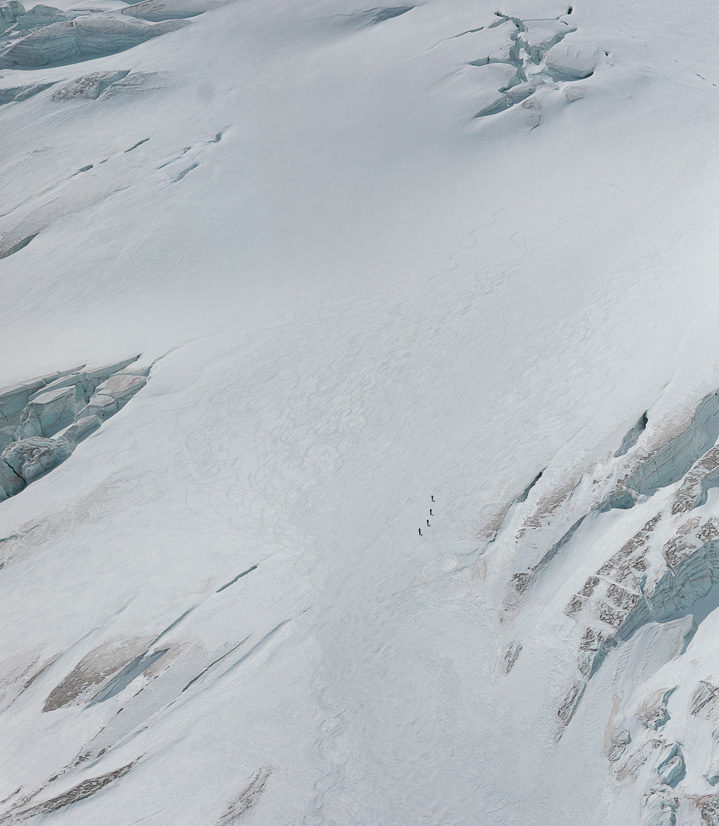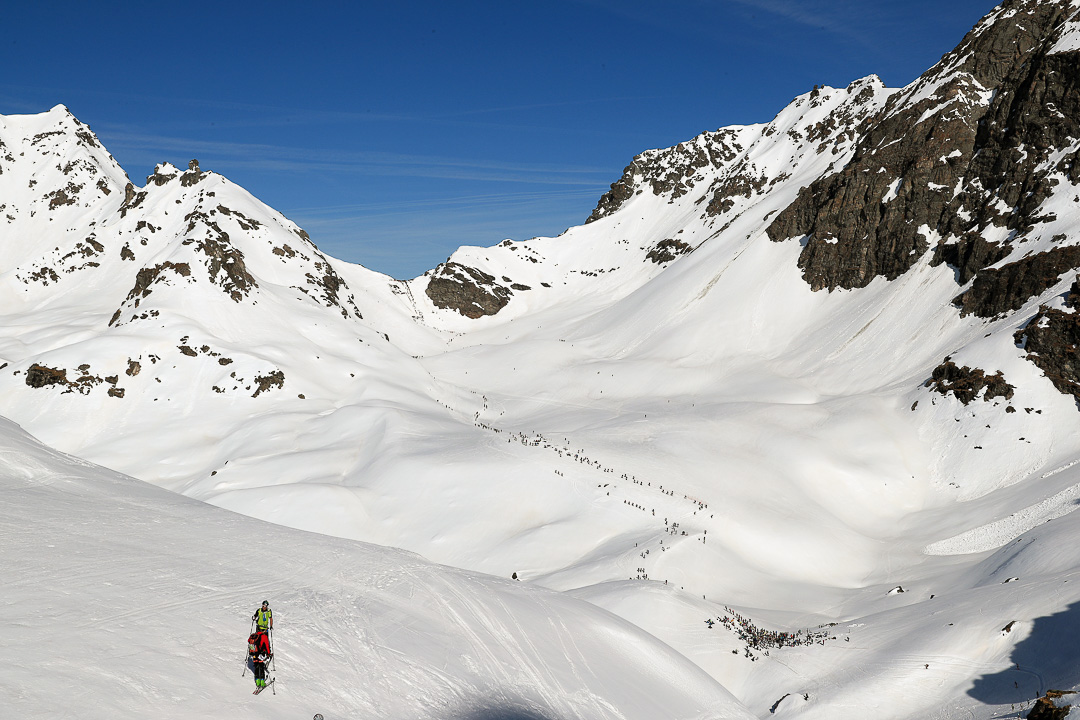The storied PdG race is a monumental, yet, doable race. If you’ve dreamed of competing with like minded skiers, moving through a mega landscape with the Swiss Army at your back can be a reality. This is part I of a three part series on the PdG. Get your race bib on, registration is now open, but closes soon (9/30).
“I see a stick or a pole or something,” I yell back to my colleague, the lead guide of our group. As tail guide, I’m on the rope out front, casting my cordelette into the whiteout, trying to discern the fall line and crevasses of the Stockji Glacier as we navigate our group down to the finish of the über classic Haute Route in Zermatt.
“Go to it!” he responds, and as I near the tree limb stuck upright in the snow, another vaguely appears, maybe 25m further on. After a third, we realize we’ve found our way onto the course of the ski race from Zermatt to Verbier we’d heard about. (In the preceding days, we’d seen helicopters, heard explosives, and been told by other guides that the Swiss army was preparing the course.) A few more markers down the now more visible glacier, and we are in an empty quonset hut-like tent structure—what will become a race checkpoint—getting our guests re-energized for the final push to Zermatt.

Amidst all the following days’ Rösti and beer to celebrate a successful tour, I kept thinking, “Whoa, they race across that terrain?” That was 2002. Twenty years later, I was on the starting line in Zermatt for the 2022 Patrouille des Glaciers or “PdG” as a member of Team Tahoe Skimo.
As a testament to how awesome I found the PdG, and to motivate you to do it, this is the first of a three-part series of articles. What follows is an overview of the race. Part 2 will cover registration, logistics, gear, etc. And in Part 3, I’ll share Team Tahoe Skimo’s experience.
Registration for the 2024 PdG closes this coming September 30. So assemble your team and sign up.





